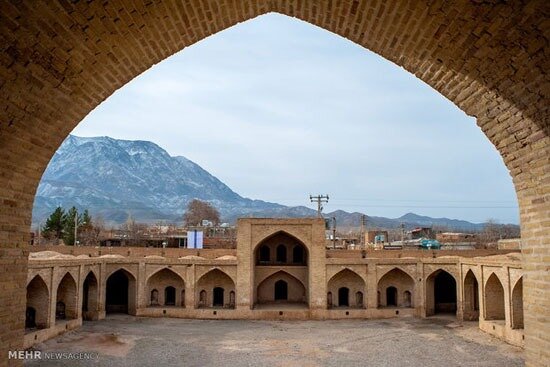Shah-Abbasi caravanserai in Semnan undergoes restoration

TEHRAN – A new round of restoration projects has recently been commenced on the Safavid era (1501 to 1736) Shah-Abbasi caravanserai in the city of Mayamey, north-central Semnan province.
The project involves repairing the middle tower on the east side and removing the extensions and re-executing the walls, while repairing eastern walls and rooftop as well as replacing worn-out bricks were done earlier, CHTN quoted Mohammad Sadeq Razavian as saying on Saturday.
The mudbrick structure was inscribed on the National Heritage list in 1986.
The historical structure of Mayamey includes several caravanserais, natural sights, and historical sites such as Shah-Abbasi caravanserai, Aqaian Mosque, Aqaian Mansion, Aqaian bathhouse, and Emarat cistern.
The main population centers of Semnan province lie along the ancient Silk Road (and modern-day Imam Reza Expressway), linking Rey (Tehran) with Khorasan (Mashhad). While few visitors spend much time in the area, driving through you can easily seek out several well-preserved caravanserais (notably Dehnamak and Ahowan), cisterns (the Cafe Abenbar in Garmsar is a special treat) and ruined mud citadels (Padeh is lumpy but fascinating). The large, bustling cities of Semnan, Damghan, and Shahrud (Bastam) all have a small selection of historic buildings and Semnan has a fine old covered bazaar.
Caravanserai is a compound word combining “caravan” with “Sara”. The first stand for a group of travelers and Sara means the building.
They often had massive portals supported by elevated load-bearing walls. Guest rooms were constructed around the courtyard and stables behind them with doors in the corners of the yard.
Iran’s earliest caravanserais were built during the Achaemenid era (550 -330 BC). Centuries later, when Shah Abbas I assumed power form 1588 – to 1629, he ordered the construction of network caravanserais across the country.
For many travelers to Iran, staying in or even visiting a centuries-old caravanserai can be a wide experience as they have an opportunity to feel the past, a time travel back into a forgotten age.
ABU/MG
Leave a Comment